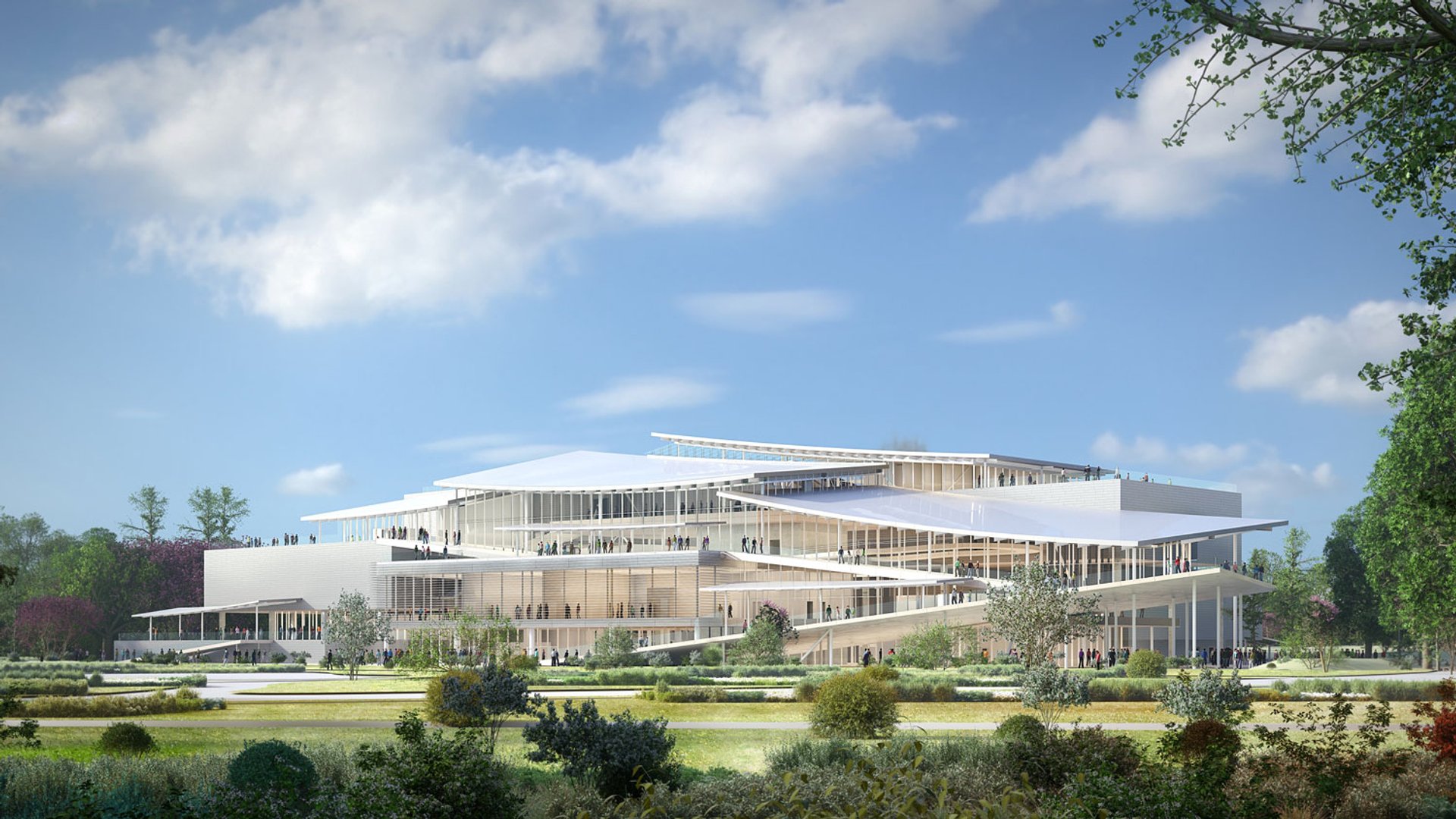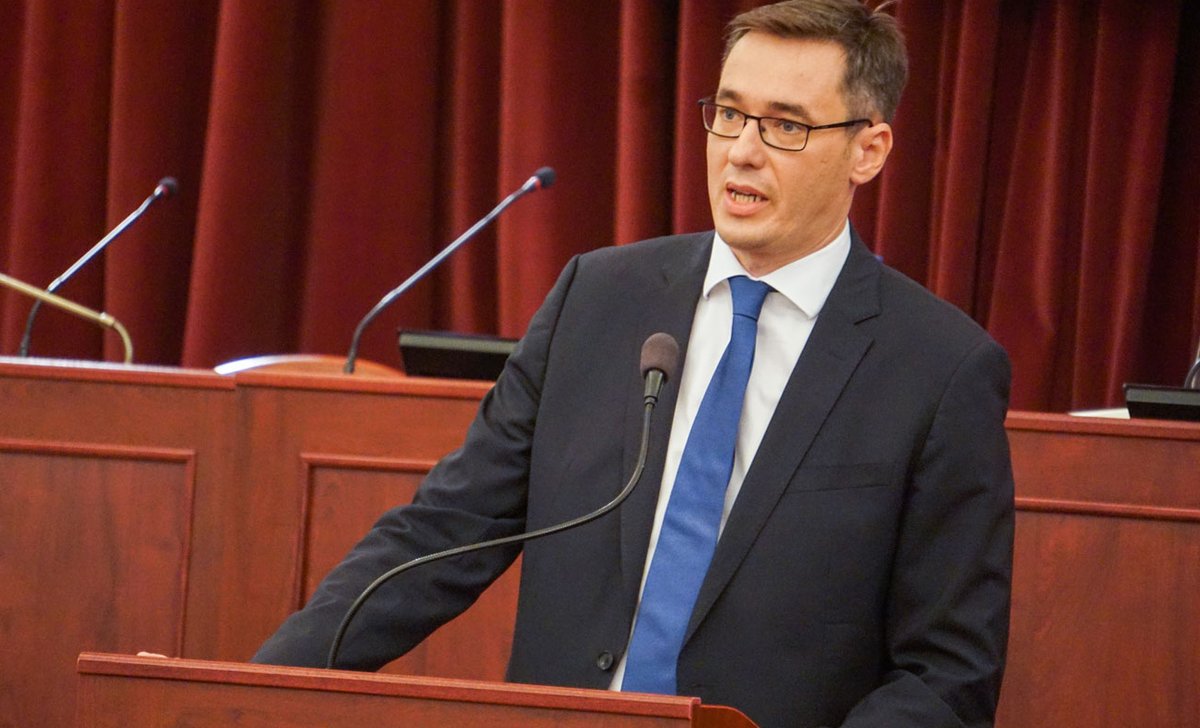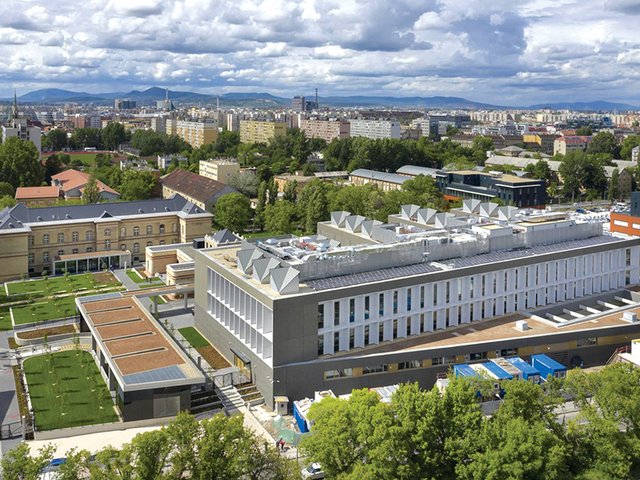Plans for Hungary’s landmark New National Gallery—conceived as the centrepiece of the rising Liget cultural quarter in Budapest’s City Park—hang in the balance after the city’s new centre-left mayor, Gergely Karácsony, moved to block its construction.
Karácsony, who was elected in October on a green platform, says that he has never been “against the project itself” but he opposes the idea of building on “one of Budapest’s few and very precious green areas”. He adds that the New National Gallery “is such a monumental building that it would have an enormous impact on its environment”.
On 5 November, Budapest’s General Assembly, which is led by the mayor, backed his proposal to halt elements of the Liget project not yet under way. At a subsequent meeting between Karácsony and Hungarian government officials, including the prime minister, Viktor Orbán, the government expressed a willingness to listen to the mayor’s demands. Construction of the New National Gallery has now stalled, with work also suspended on the House of Hungarian Innovation, a successor to Budapest’s former museum of transport that was expected to cost in excess of €100m.
Billed as Europe’s biggest ongoing cultural development, at a total cost of around €1bn, the Liget project has already seen the renovation of Budapest’s Museum of Fine Arts, the opening of a state-of-the-art restoration and storage facility, and the restoration of the 19th-century Olof Palme House. Construction is continuing on the new House of Hungarian Music, designed by the Japanese architect Sou Fujimoto, and on a new building for the Museum of Ethnography.
Initiated in 2011 by Orbán’s right-wing Fidesz government, the project progressed relatively smoothly under the two terms of Karácsony’s predecessor, István Tarlós, a period the government describes as a “golden era” for investment in Budapest. Local opponents have, however, repeatedly expressed concerns about the environmental impact on the park.

A rendering of Hungary's New National Gallery, designed by the Japanese architectural firm Sanaa Courtesy of Liget Budapest 2019
Project organisers have defended the high architectural standard of the new buildings. According to László Baán, the driving force behind the Liget project, the plans are in line with the history of City Park (Városliget), which has been home for over a century to cultural and recreational buildings such as the Széchenyi thermal baths. “The new buildings are not being constructed on green areas but are instead replacing parking spaces and long-outdated buildings planned to be demolished,” Baán argues. He says that green space in the park will actually increase from 60% to 65%, a calculation disputed by Karácsony and other opponents.
Construction on the €250m New National Gallery, designed by Japanese architectural firm Sanaa, was due to begin in early 2020 after two years spent refining the designs, Baán says. The project would eventually close the existing Hungarian National Gallery in Buda Castle, dividing its collection between the Museum of Fine Arts and the New National Gallery (for works made after 1800). Baán’s ambition has been to reunite Hungary’s national art collections and present them in an international context, as they were before the Communist period.
Because the Liget project is funded by central government, Karácsony accepts that negotiations over the New National Gallery will continue. The mayor suggests that alternative brownfield sites could be found elsewhere in Budapest, where construction “would not damage our living natural environment”.
In a statement to The Art Newspaper, the Hungarian government says that it “continues to remain committed to Budapest projects”, but “does not wish to implement developments without the support of the mayor of Budapest and the leaders of the districts”. The government is “open to conducting a normal dialogue with the capital in the spirit of fair partnership”, the statement says.



